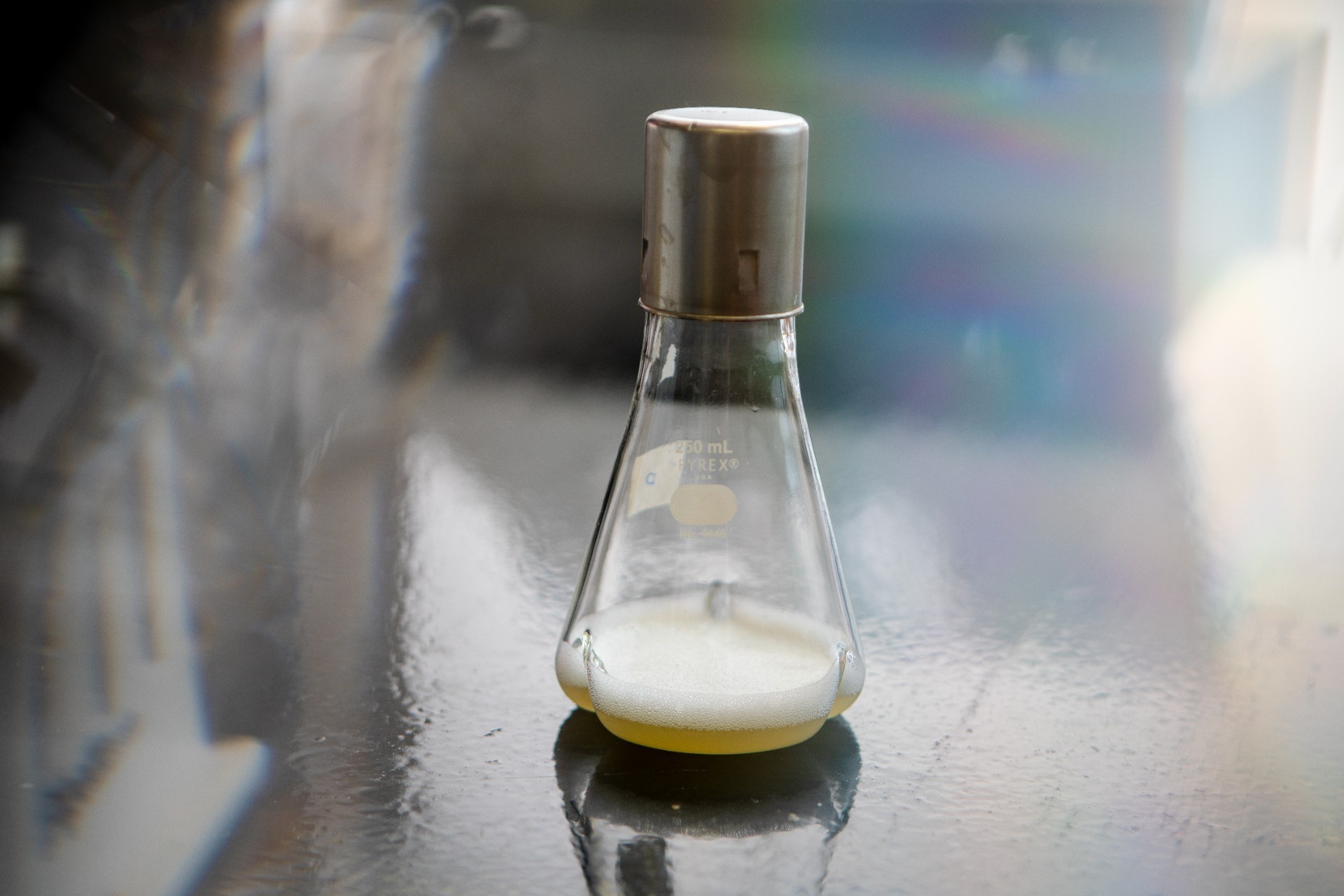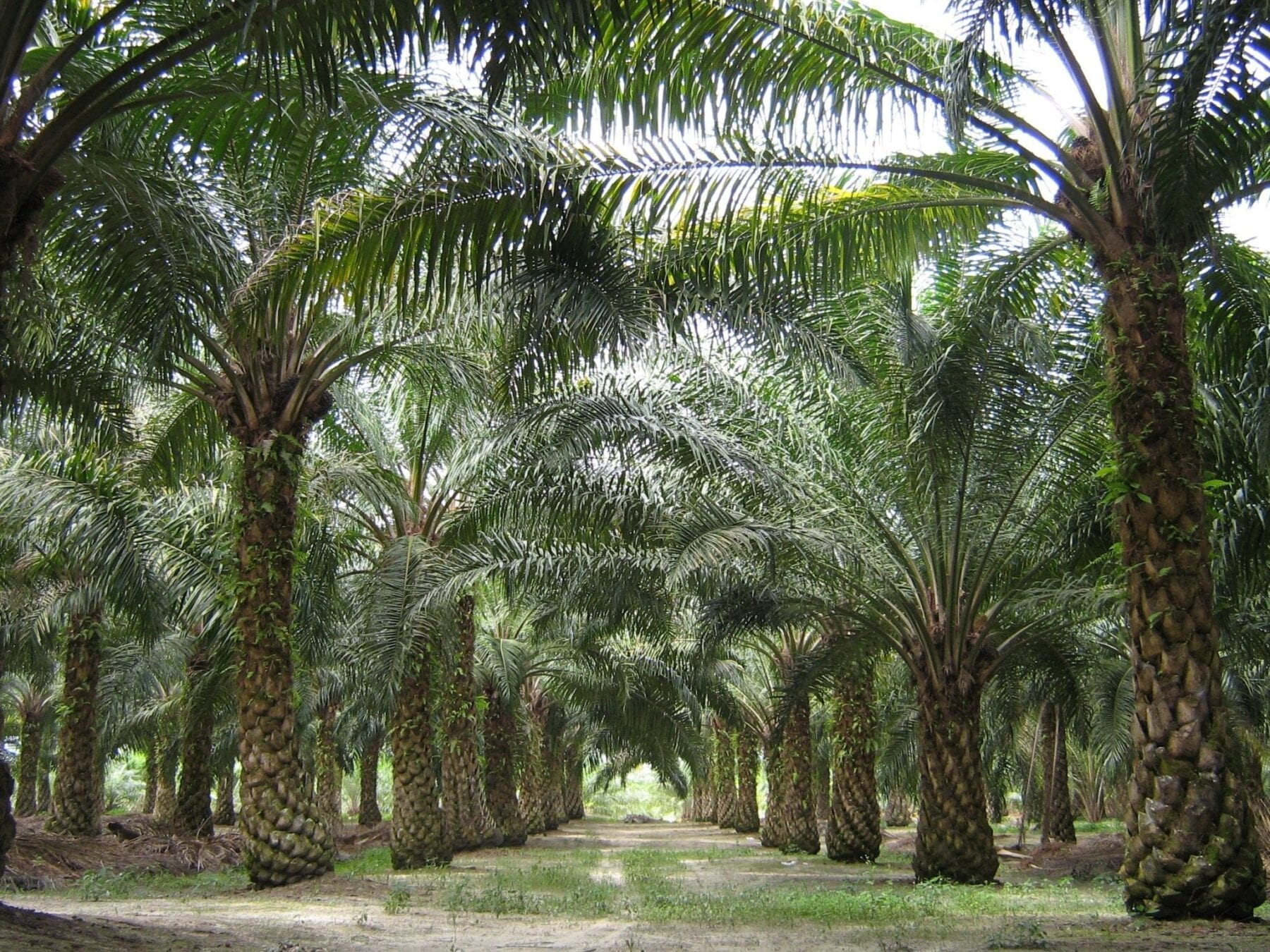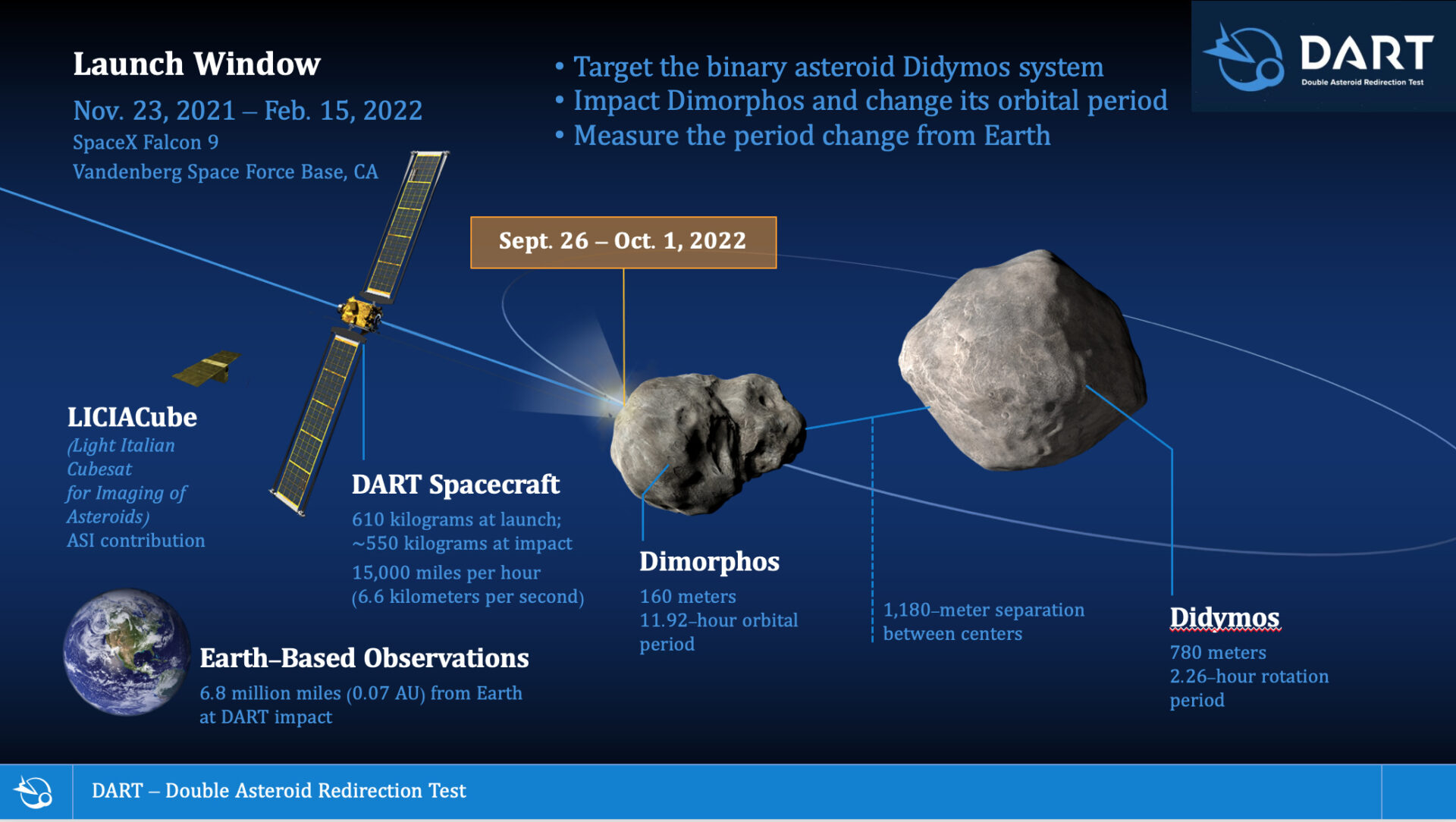
A strain of E. coli that doesn’t endanger human health grows in a flask full of nutrients (the yellow broth). In a study, scientists genetically engineered such E. coli to convert glucose into a class of fatty acids, which the team then transformed into a hydrocarbon called an olefin.
Credit: Douglas Levere / University at Buffalo
It sounds like modern-day alchemy: Transforming sugar into hydrocarbons found in gasoline.
But that’s exactly what scientists have done.
In a study in Nature Chemistry, researchers report harnessing the wonders of biology and chemistry to turn glucose (a type of sugar) into olefins (a type of hydrocarbon, and one of several types of molecules that make up gasoline).
The project was led by biochemists Zhen Q. Wang at the University at Buffalo and Michelle C. Y. Chang at the University of California, Berkeley.
The paper, published on Nov. 22, marks an advance in efforts to create sustainable biofuels.
Olefins comprise a small percentage of the molecules in gasoline as it’s currently produced, but the process the team developed could likely be adjusted in the future to generate other types of hydrocarbons as well, including some of the other components of gasoline, Wang says. She also notes that olefins have non-fuel applications, as they are used in industrial lubricants and as precursors for making plastics.
A two-step process using sugar-eating microbes and a catalyst
To complete the study, the researchers began by feeding glucose to strains of E. coli that don’t pose a danger to human health.
“These microbes are sugar junkies, even worse than our kids,” Wang jokes.
The E. coli in the experiments were genetically engineered to produce a suite of four enzymes that convert glucose into compounds called 3-hydroxy fatty acids. As the bacteria consumed the glucose, they also started to make the fatty acids.
To complete the transformation, the team used a catalyst called niobium pentoxide (Nb2O5) to chop off unwanted parts of the fatty acids in a chemical process, generating the final product: the olefins.
The scientists identified the enzymes and catalyst through trial and error, testing different molecules with properties that lent themselves to the tasks at hand.
“We combined what biology can do the best with what chemistry can do the best, and we put them together to create this two-step process,” says Wang, PhD, an assistant professor of biological sciences in the UB College of Arts and Sciences. “Using this method, we were able to make olefins directly from glucose.”
Glucose comes from photosynthesis, which pulls CO2 out of the air
“Making biofuels from renewable resources like glucose has great potential to advance green energy technology,” Wang says.
“Glucose is produced by plants through photosynthesis, which turns carbon dioxide (CO2) and water into oxygen and sugar. So the carbon in the glucose — and later the olefins — is actually from carbon dioxide that has been pulled out of the atmosphere,” Wang explains.
More research is needed, however, to understand the benefits of the new method and whether it can be scaled up efficiently for making biofuels or for other purposes. One of the first questions that will need to be answered is how much energy the process of producing the olefins consumes; if the energy cost is too high, the technology would need to be optimized to be practical on an industrial scale.
Original Article: How sugar-loving microbes could help power future cars
More from: University at Buffalo | University of California Berkeley
The Latest Updates from Bing News & Google News
Go deeper with Bing News on:
Glucose into olefins
- Glucose monitors may misclassify people as being at risk of diabetes
Our blood sugar levels vary a lot from day to day, so results from continuous glucose monitors need to be interpreted with caution ...
- Glucose Toxicity in Beta-Cells: Type 2 Diabetes, Good Radicals Gone Bad, and the Glutathione Connection
Chronic exposure to hyperglycemia can lead to cellular dysfunction that may become irreversible over time, a process that is termed glucose toxicity ... when transfected into glucotoxic ß ...
- Do I Need an Oral Glucose Tolerance Test?
Then it should go back to normal, as insulin moves glucose into your cells. If your blood sugar takes a long time to go back to normal, you could have diabetes. You might see a measurement from ...
- Cinnamon's Impact on Blood Sugar: A Nutrition Professional's Perspective
This happens when cinnamon imitate the effect of insulin and increase glucose transport into cells, which makes insulin more sensitive to move glucose into the cells.
- Study shows daily glucose levels fluctuate more than we thought, challenging diabetes diagnosis
Study reveals significant fasting glucose variability in nondiabetic adults using continuous glucose monitoring, challenging current diabetes diagnosis criteria and emphasizing the need for multiple ...
Go deeper with Google Headlines on:
Glucose into olefins
[google_news title=”” keyword=”glucose into olefins” num_posts=”5″ blurb_length=”0″ show_thumb=”left”]
Go deeper with Bing News on:
Sustainable biofuels
- Aviation industry rules that neither corn nor soybeans meets its 'sustainable' guidelines
Federal policymakers and Big Ag "encourage" changing benchmarks so that ethanol SAF can be meet "green" energy standards.
- Feds give financial boost to biofuel sector amid growing U.S. competition
Canada’s biofuel industry is welcoming a proposed multi-billion dollar package of financial support from the federal government, although concerns remain about whether it will be enough to compete ...
- New $60m lab in S’pore to drive R&D in carbon capture, biofuels and hydrogen
Transforming Singapore’s energy and chemical sectors will be a priority, says DPM Heng Swee Keat. Read more at straitstimes.com.
- Honeywell announces technology for producing low-cost sustainable aviation fuel
The new technology will expand the feedstock options available in the industry to sources that are more plentiful, says Ken West, president and CEO of the firm ...
- Long-term strategy for biofuels
Daniel Chereau leads IATA's fuel team, focusing on efficiency of fuel supply – including the ramp up of sustainable aviation fuels (SAF). He will be speaking on the second day of the Sustainable ...
Go deeper with Google Headlines on:
Sustainable biofuels
[google_news title=”” keyword=”sustainable biofuels” num_posts=”5″ blurb_length=”0″ show_thumb=”left”]










